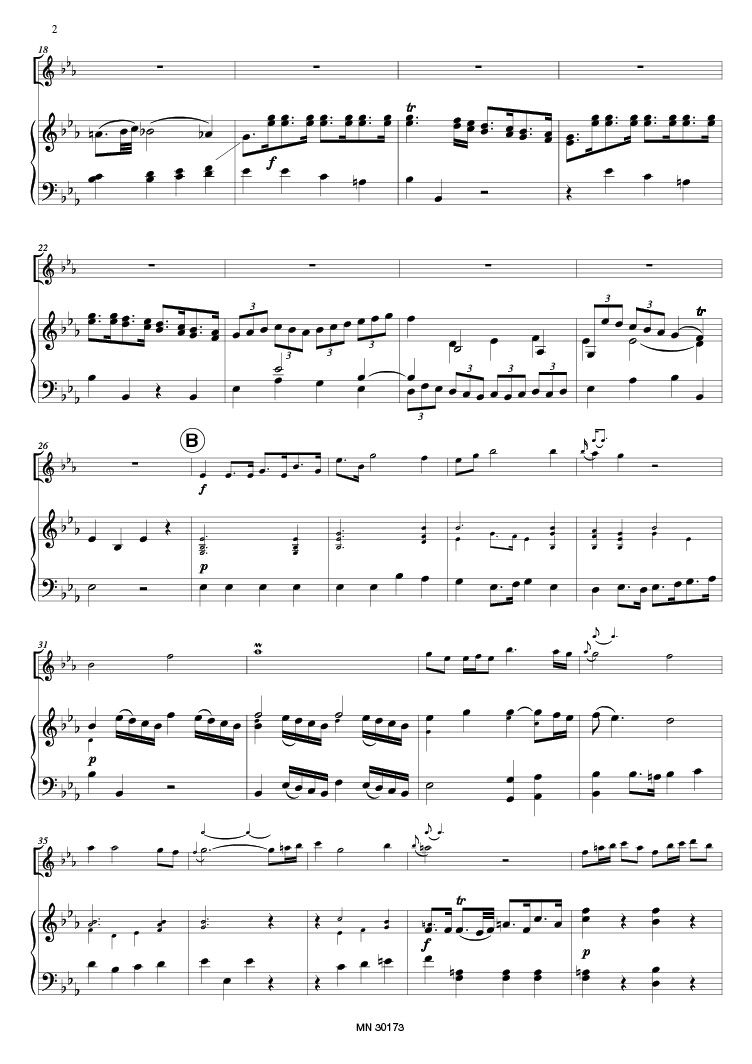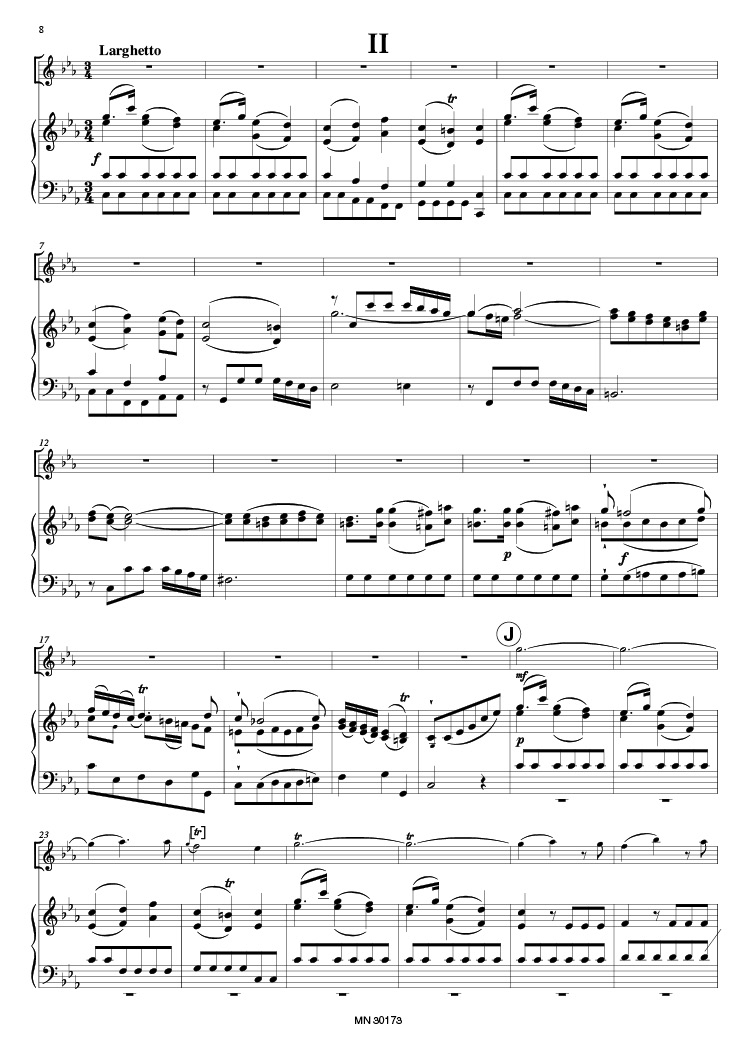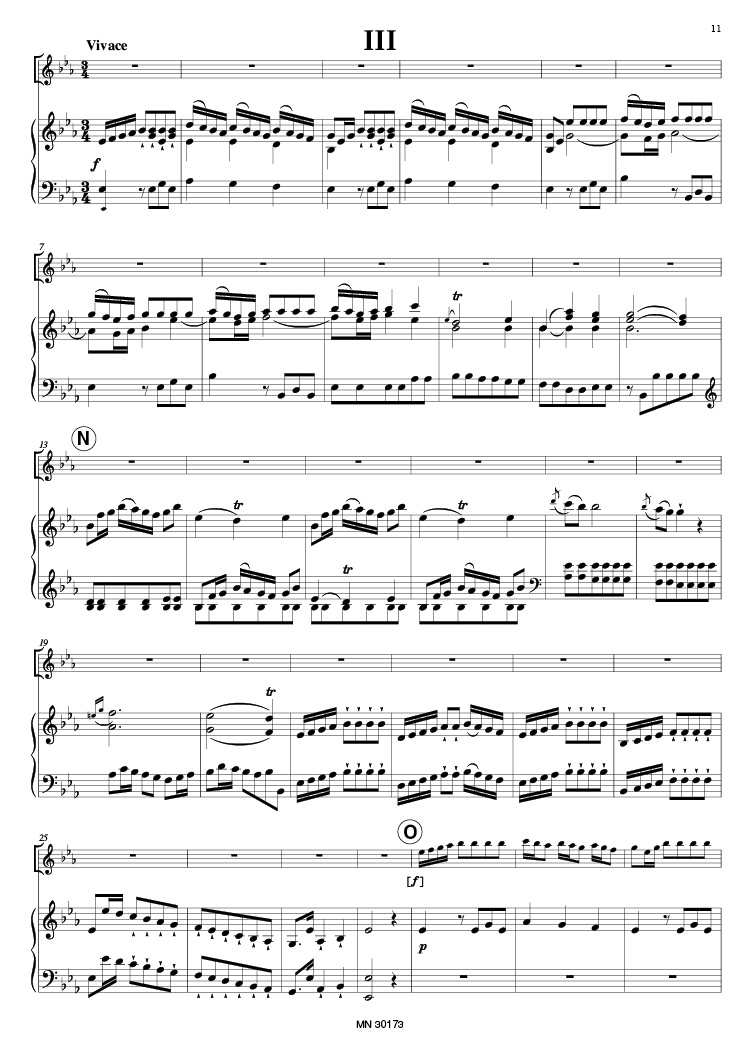
Hertel Concero per la Tromba No. 1 in Eb
Instrumentation: Trumpet, Strings and Basso continuoRange: e-flat' - f'''
Difficulty (I-VI): V
Parts for: E flat and Piccolo B flat Trumpet
Series: Edward Tarr Brass
Editor: Irmtraud Krüger
Johann Wilhelm Hertel was born on October 9, 1727 in Eisenach and died on June 14, 1789 in Schwerin - as the gentle reader will have recognized, he died a month to the day before the outbreak of the French Revolution. His father Johann Christian Hertel (1699-1754) was a well-known player of the viola da gamba and the violin as well as a composer, and was active in Eisenach and Strelitz (Mecklenburg). His grandfather Jakob Christian Hertel (fl c. 1667 - c. 1726) was once a chapelmaster (Kapellmeister) in Oettingen and Merseburg. He received his early musical training from S. L. Heil (1706-64), a pupil of J. S. Bach.
By the age of 12 he was good enough to accompany his father on the harpsichord during concert tours. He studied the violin in 1742-43 with Carl Köckh in Zerbst and later with Franz Benda (1709-86) in Potsdam.In 1744 he was appointed violinist and harpsichordist at the court of Strelitz, where his father had been working since 1741. When this court was dissolved in 1753 and his father was pensioned off, he moved to Schwerin, where he held the position of court composer. In 1765 he received the additional appointment as private secretary to Princess Ulrike. When the court orchestra was moved to Ludwigslust two years later, Duke Ludwig graciously allowed his dismissal, so that he could remain in Schwerin. From 1770 he was privy councillor in the service of the Princess, a position which nevertheless did not hinder him from continuing to compose and to arrange concerts. In his late years he abandoned the violin in favor of keyboard instruments.
Besides numerous works employing the trumpet, Hertel wrote no less than three trumpet concertos (Nos. 1-2 in E flat, No. 3 in D), a double concerto for trumpet and oboe in E flat, and a so-called concerto in D for trumpet, two oboes, and two bassoons. With the present edition of the full score and parts of Concerto No. 1, all of these works are finally available in modern editions; up until now, this first trumpet concerto had only been available in a piano score. All three of Hertel's trumpet concertos are in three movements, consisting of a slow movement framed by two fast ones. All of these movements have more or less the same form, with the end of the long introduction serving as the movement's conclusion. The present concerto is the most substantial of the three. The long multipartite introduction contains the motifs which are worked on during the course of the firstmovement In bars 88-93 of this movement, Hertel's treatment of such a motif even anticipates the development section of the Classical sonata form, as he repeats three times in sequence the motif found in bars 5 and 6 of the introduction.
The composer makes no small demands on his soloist, Hoese. Sprighty leaps, the execution of which is no mean feat on the natural trumpet, alternate with lines cantabile in nature. The concise second movement is one of the most beautiful slow movements in the entire trumpet literature. More technical matters: A lipped halfstep (sounding f'#, between the 9th and 10th partial of the instrument in Eflat) can be found in bars 75 and 77 of the 1st movement; the highest trumpet note ever written by Hertel, the 18th partial (sounding g'''), is found, approached by the leap of a fifth, in bar 94 of the 3rd movement. At the ends of the outer movements, the composer wrote particularly virtuoso flourishes which serve to replace cadenzas improvised by the soloist (1/129-137 and 111/152-154), and in bar 72 of the second movement there is even a brief written-out



